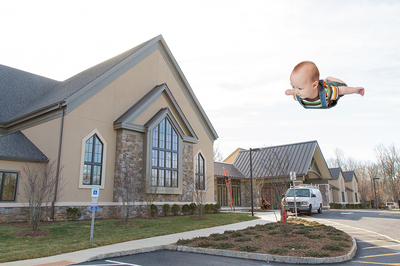-
Posts
808 -
Joined
-
Last visited
-
Days Won
5
Member Information
-
Main editing computer
Mac desktop
-
Editing software
Lightroom with Photoshop
-
Monitor Calibrator
X-Rite
-
Cameras, lenses and other photographic equipment
Canon 5DM3, 24-70L II, 70-200L IS II, 85/1.8, tons of flashes (you can never have too many flashes!)
Recent Profile Visitors
5,902 profile views
Christina Keddie's Achievements
-

Missing Catalog
Christina Keddie replied to Summer Michelle's topic in Lightroom questions or problems
If you just deleted the folder from your desktop, and you don’t have some seriously wonky settings that create a new catalog internally in each new folder (that would take serious intentional effort to set your LR up like that!), then all you deleted was the files themselves. I’m assuming you aren’t creating a new LR catalog with each set of edits? Because again, that would take intentionality and effort to do so. Assuming you’re still in the same LR catalog you’ve been in since the last time you created a new one, your LR edits are still intact in LR, in this catalog. So go back inside LR, and navigate back to the LR folder that you used to edit these files. It should still be there, just with a question mark on it, assuming your file restore didn’t bring the files back to the exact same location on your hard drive. Can you post some screenshots of what you’re seeing, and why you think your catalog disappeared? -

Missing Catalog
Christina Keddie replied to Summer Michelle's topic in Lightroom questions or problems
Can you clarify — did you simply delete the files from your hard drive (and then restore them back to their original location)? Or did you also delete the LR catalog containing your edits of these files? Whatever you deleted (files, catalog, or both), you have to restore. And then you have to open that LR catalog and if necessary relocate the files to connect the catalog with the files. -

Editing during an export
Christina Keddie replied to Lloyd's topic in Lightroom questions or problems
I'd recommend making a virtual copy of any file prior to doing any B&W work in LR. I don't believe making changes to your catalog will impact an ongoing export (should be easy enough for you to test it out and see, on a smaller batch than 700), but I prefer keeping separate versions of files separate, so I can always go back to the master color file to export disposable JPGs of it, and ditto the master B&W file. -

How to remove female facial hair?
Christina Keddie replied to Roxana Valdes-Lynch's topic in Lightroom questions or problems
My foolproof LR method for this kind of editing is usually to send it over to PS. And honestly, with targeted edits like this, batch editing in a raw processor isn't going to save you any time, since you'd have to move and refine the adjustment brush strokes for each file anyways. But if you're set on trying to do this in LR, I would probably try an adjustment brush (making sure, of course, that the auto-mask box is unchecked), and play with the exposure, shadows, blacks, clarity, and even temp/tint/color sliders until you get something that works. Then you could sync the brush adjustments across the files, and then go in and refine the placement and shape of the brush strokes on each file. Which, again, really wouldn't save much time. PS would be much better at fixing this, and you could duplicate those fix layers across the files to make it faster to fix each one. -

Printing in Photoshop
Christina Keddie replied to Kendra's topic in Photoshop / Elements / Bridge / ACR questions or problems
And what are the pixel dimensions of your new document? -
By "redo it," you mean go to that layer and transform it, right? Because you still have everything as smart objects and separate layers?
-
You've also made that top left head markedly smaller in relation to her body, right? I don't know the child in question, but it looks off just on its own, and that head is much larger in the other photos in this thread.
-
@Teresa, I've moved this to the appropriate section. So yes, we cover questions like this.
-
Do follow the two steps Damien just gave you. But just so you know -- he gave you a link above ("To start, do this"), and that hyperlinked "this" gives you an incredibly detailed step-by-step tutorial on how to fix your color space.
-

settings for text clarity
Christina Keddie replied to HKeyMoments's topic in Questions about tutorials and articles
Have you already read this article on Damien's site? -
Which Yongnuo models have you had, and what frustrated you about them? I've switched to all YN600 units and absolutely love them. But if you can tell us why you're looking to switch, we can provide better input!
-

Getting ready to upgrade
Christina Keddie replied to Carleemarkestein's topic in Photo Gear & Equipment
Do you not have any lenses at all that you'd want to keep? If that's the case, then I would strongly urge you to consider buying good glass first... -
If you want a flying Superman pose, you'd need him on his belly with his head held up, yes? Otherwise, you'd have a lying down baby with his head down, which might not be the look you're going for in a Superman composite. However you want the composite to look, you'd need to plan that out in advance well before ever picking up your camera. Think about how you want the baby to look when he's "flying midair" in the final composite, and figure out how to get him to be in that pose. (Again, you may want to wait until tummy time and strong neck control are established.) Then you'd need to plan out what you want to composite him *into* -- you'll need your photo of a cityscape or sky at sunset or whatever for the new background. Take special note of the lighting in your new background photo and plan the lighting in your baby shots to match. Then you'd layer your baby photo (or photos, if you take a whole bunch in order to have all the pieces of the baby you need without mom's hands blocking any part of him) onto your new background photo and mask away.
-
This is a really crappy example (I threw this together in PS in about 3 minutes when a friend shared that Rachel Hulin series with me), but it was easily done because my son was 6 months in the original photo and was into throwing his arms out like that when we did tummy time. No need to remove anything or recreate his clothes or anything.



